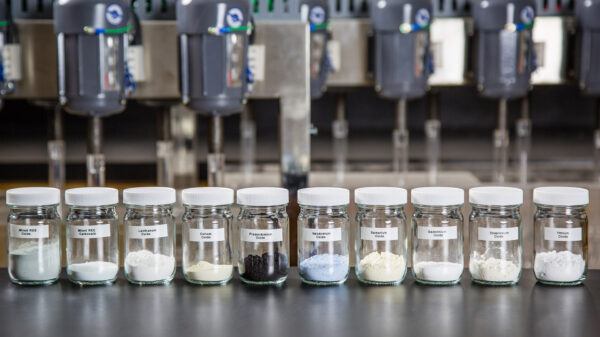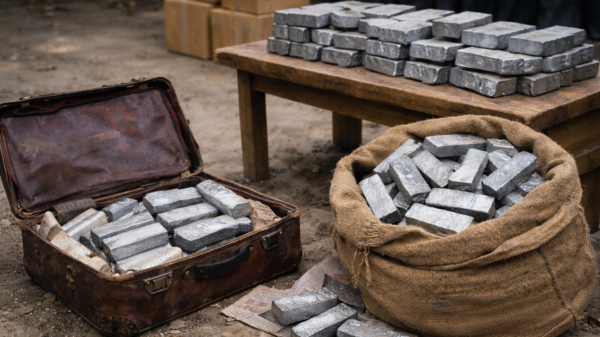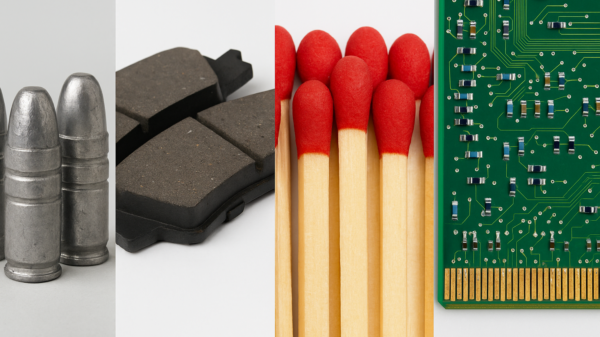The United States has been finding some rather unique ways of getting past China’s stranglehold on the antimony market.
According to records from customs and shipping, antimony has been entering the US from Thailand and Mexico after China banned the shipments to the United States last year. Furthermore, at least one Chinese company is reputed to be involved.
China controls the global supply of antimony, gallium, and germanium—minerals essential to semiconductors, telecommunications, and military technology. On December 3, Beijing banned exports of these minerals to the United States. The move followed growing U.S. pressure on China’s chip sector.
Additionally, U.S. companies appear to be bypassing the ban. Trade data shows shipments are being rerouted through third countries. Chinese officials have acknowledged this workaround.
Executives from two American firms also confirmed they sourced restricted minerals from China in recent months. This suggests that, despite the ban, supply lines remain partially intact.
U.S. customs data shows the U.S. imported 3,834 metric tons of antimony oxide from Thailand and Mexico between December and April. This volume nearly exceeds the total from the previous three years combined.
Meanwhile, Chinese customs data reveals a sharp shift in trade flows. Thailand and Mexico have become two of China’s top-three antimony export destinations this year. Neither country ranked in the top 10 in 2023, the last full year before Beijing’s restrictions.
Furthermore, RFC Ambrian reports that only one antimony smelter operates across both countries. The Mexican facility reopened in April. Neither country mines significant amounts of the metal.
Despite higher prices, U.S. imports of antimony, gallium, and germanium are on track to meet or surpass pre-ban levels.
Read more: NevGold’s latest drill results extend priority target at Limo Butte by over 200 metres
Read more: NevGold’s latest Nevada drill results show exceptional gold mineralization
US law allows American buyers to purchase antimony
Ram Ben Tzion, co-founder and CEO of digital shipment inspection platform Publican, confirmed evidence of transshipment. However, he said the trade data does not reveal which companies are involved.
In May, China’s Ministry of Commerce accused unnamed foreign entities of working with domestic smugglers to bypass export controls. The ministry called stopping these activities essential for national security.
U.S. law allows American buyers to purchase antimony, gallium, or germanium of Chinese origin. Chinese firms can also export these minerals to other countries if they hold valid licenses.
Levi Parker, CEO and founder of U.S.-based Gallant Metals, told Reuters he sources about 200 kg of gallium from China each month. He declined to name the parties involved, citing potential repercussions.
The process begins when purchasing agents in China buy the material from manufacturers. A shipping company then relabels the packages as iron, zinc, or art supplies. It also reroutes the shipments through another Asian country.
In addition, Parker noted that these methods are expensive and unreliable. He said he would prefer to import 500 kg regularly. However, larger shipments draw scrutiny, forcing Chinese logistics firms to act “very carefully” due to the risks involved.
The U.S. and China are locked in a critical minerals standoff. China banned exports of antimony, gallium, and germanium to the U.S. in December 2024. In response, the U.S. imposed steep tariffs—including up to 50 per cent on copper and 25–50 per cent on steel, aluminum, tungsten, solar wafers, and polysilicon—to boost domestic supply.
Read more: NevGold pulls up even more promising antimony grades from Nevada property
Read more: NevGold raises $5.5M for promising gold-antimony prospects in Nevada
The US has multiple methods of acquiring the metal
What’s more, the United States have looked to its own meagre domestic options for further antimony sources.
The U.S. government is accelerating critical mineral development through its FAST-41 permitting program, which includes strategic resources like antimony. One of the key beneficiaries is Perpetua Resources Corp (TSE: PPTA) (NASDAQ: PPTA) whose Stibnite project in Idaho aims to supply over 35 per cent of domestic antimony needs by 2028. The project also expects to yield significant gold output and has secured support from both the Pentagon and the U.S. Export–Import Bank.
Also included under FAST-41 is the Resolution Copper project, operated by Rio Tinto Group (NYSE: RIO) in Arizona. While primarily focused on copper, this project may eventually contribute antimony as a by-product.
Besides these approved projects, several companies have increased their antimony activity but have not yet received FAST-41 status. NevGold Corp (CVE: NAU) (OTCMKTS: NAUFF) (FRA: 5E50) is one such company. It continues to explore strong gold-antimony mineralization at its Limousine Butte project in Nevada, with promising drill results.
United States Antimony Corp (NYSEAMERICAN: UAMY), which operates the only antimony smelter in North America, has also expanded its operations and claim holdings. Military Metals Corp (CNSX: MILI) (OTCMKTS: MILIF) (FRA: QN90), focused solely on Western antimony supply, holds past-producing assets in Nevada, Nova Scotia, and Slovakia. These projects remain outside FAST-41 but could become strategic targets as U.S. demand grows.
Conversely, Australian juniors such as Larvotto Resources Ltd (ASX: LRV) (FRA: K6X) and Trigg Minerals Ltd (ASX: TMG) (OTCMKTS: TMGLF) have advanced antimony exploration in response to China’s export restrictions.
.
NevGold Corp is a sponsor of Mugglehead news coverage
.














